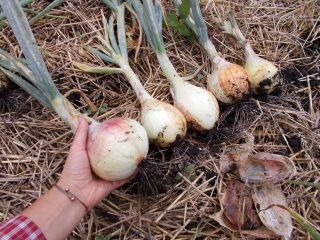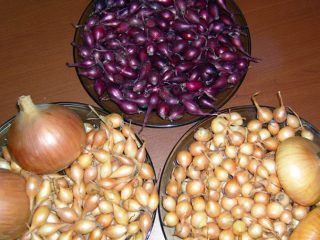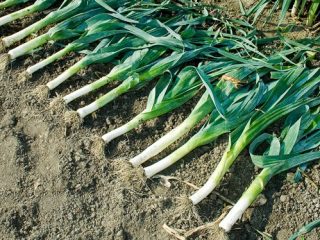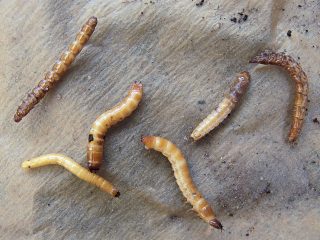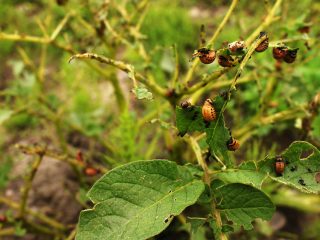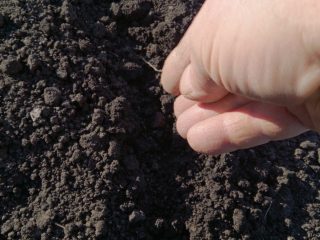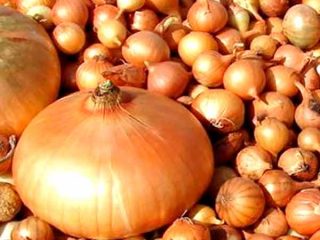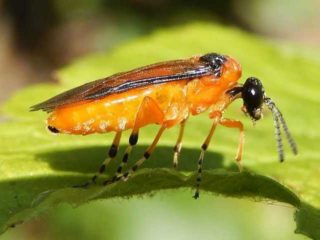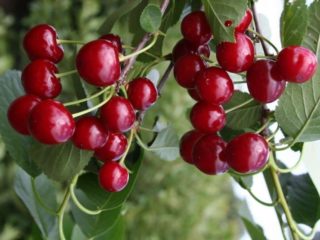Content
Onion pests cause no less damage to plantings than fungal and viral diseases. Insects can be controlled, but it is important to notice the symptoms of parasite infestation in the early stages.
Signs of pest damage
It can be difficult to recognize pests on onions, since the feathers of the crop are thin and the heads are more than half hidden underground. Adult insects and larvae are often invisible to the naked eye. But indirect signs help to recognize their presence:
- premature yellowing and fading of feathers;
- the appearance of dark spots and holes on green leaves;
- slowing down the growth of onions;
- decrease in yield;
- the appearance of plaque on feathers and bulbs.
A ripe crop damaged by insects is not of good quality. The onion heads turn out to be small, rotten or dried out. On the bottom and roots you can often notice accumulations of larvae and adult insects.
Onion pests and their control
Onions suffer from pests less often than other garden crops, since they contain phytoncides - substances that repel insects.However, some parasites still pose a danger to him.
Onion fly
The main pest of the crop is the onion fly, which differs from the usual one in its light ash color. The parasite lays eggs in beds and directly in uneven surfaces of the seed. After hatching, the larvae begin to feed on the bulbs and gnaw numerous tunnels in them.
You can recognize a fly by wilting green feathers and slowing down the development of plants. A characteristic sign is the appearance of an unpleasant odor - this indicates rotting of the bulbs. If you carefully examine the plantings, you will find white larvae under the upper scales of the turnips.
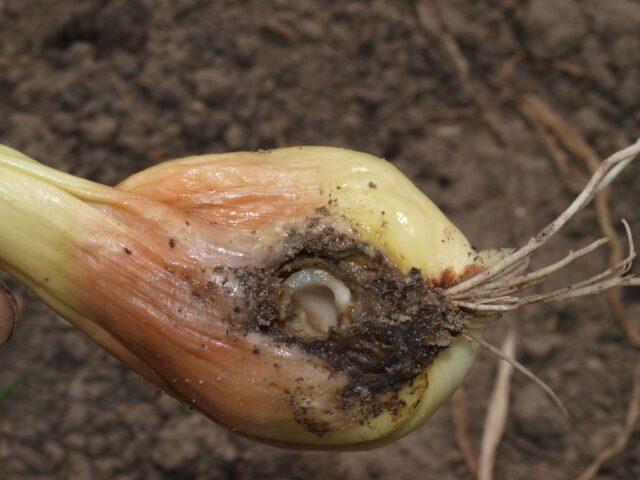
The onion fly begins to harm plantings at the end of spring
There are several ways to get rid of onion flies. In particular, they apply:
- dusting with tobacco dust;
- spraying with ammonia diluted in a volume of 45 ml per bucket of water;
- treatment with Aktara, Diazinon and similar drugs.
Digging the soil in autumn is a good way to prevent onion flies. Before planting, the sets should be treated with a light pink solution of potassium permanganate to strengthen the immune system.
Thrips
Onion thrips looks like a small mosquito with a narrow light yellow or brownish body and fringed wings. Adult pests and whitish or greenish larvae feed on the cell sap of the plant's pulp and feathers. You can recognize the appearance of thrips by light and brownish spots on the bulbs and by yellowing of the tips of the leaves.
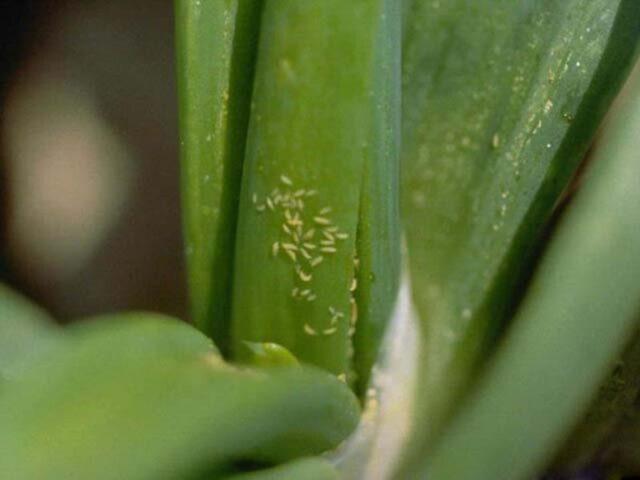
Thrips overwinter in plant debris, so in the fall all debris in the beds must be removed and burned
Pest control is carried out using the drugs Aktara, Fufanon and Actellik. The products are diluted according to the instructions and the plantings are sprayed several times a season, but no later than a month before harvest. You can also use tobacco solution and celandine infusion. To prevent the insect from harming the already harvested crop, the basement or attic must be fumigated with a sulfur bomb.
Onion root mite
The onion mite damages plantings in humid and hot weather. It is especially difficult to notice - the insect lives underground, has a whitish color, and does not exceed 1 mm in size. But characteristic symptoms allow one to suspect the presence of a mite on an onion. The feathers become deformed and become covered with a white coating, and the turnips lose moisture, wrinkle, become loose and rotten. Yellow spots or moldy areas form on the scales.
The fight against onion mites is carried out using insecticidal and acaricidal agents - Aktara, Iskra and Aktellika. You can also use nettle infusion - brew 100 g of leaves in 500 ml of boiling water and leave for five days, and then dilute with 5 liters of water and water the beds. To prevent the appearance of the pest, the sets or seeds are heated before planting.
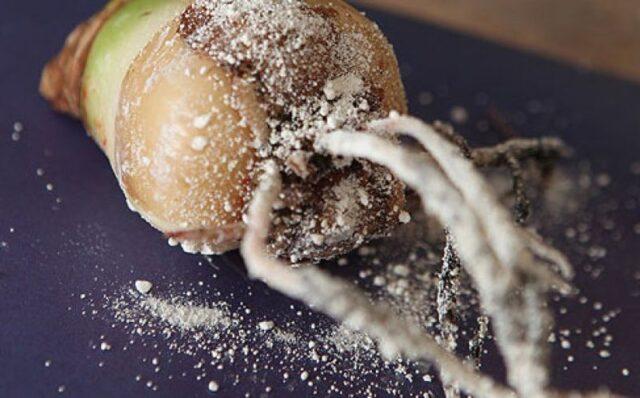
Bulbs showing signs of mite damage should not be stored - they should be thrown away immediately.
Hoverfly
The onion hoverfly, or small daffodil fly, has a bronze or greenish shell and reaches 7 mm in length.The pest mainly affects underground turnips with cracks and wounds, and often attacks plantings that have already been damaged by other insects. The parasite slows down the normal development of onions, leading to yellowing and withering of the feathers from the top to the base. The underground heads of the crop soften and begin to rot, and an unpleasant odor often emanates from the beds.
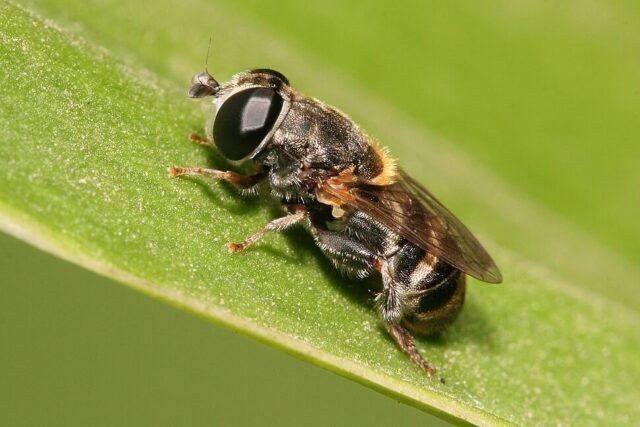
The onion hoverfly begins to damage plantings in June
When affected by a hoverfly, the affected bulbs must be removed from the soil and destroyed. The remaining plantings are spilled with a saline solution prepared at the rate of 200 g of powder per 10 liters of water. The first treatment is carried out when the feathers grow to 5 cm, the second is carried out after three weeks.
Stem nematode
A dangerous pest of onions is the nematode. The insect infects the crop in late summer shortly before harvest. First, white translucent worms feed on the succulent feathers of the plant, and then descend to the bulbs and begin to absorb the pulp.
You can recognize the stem nematode by deformation of the leaves and white bloom. When affected by the pest, the feathers of the plants quickly turn yellow and dry out. It is almost impossible to effectively combat the nematode, since by the time alarming symptoms appear, the parasite has managed to cause serious damage to the underground bulbs. The vegetable heads rot and emit an unpleasant odor; when removed from the soil, numerous white worms can be seen on them.
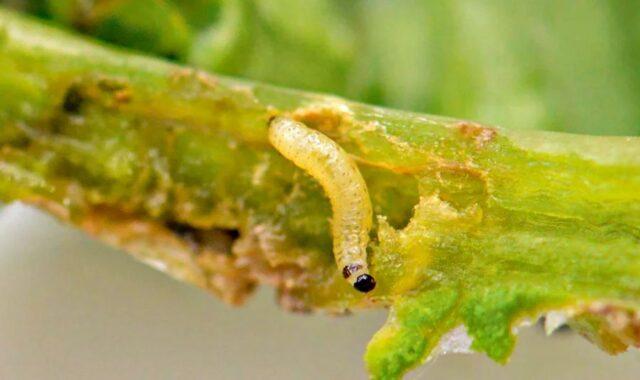
Treating the soil with ammonia solution before planting onions helps prevent stem nematodes.
Pest control must be preventative. Onions are heated and disinfected with a solution of potassium permanganate before planting. The soil in the garden is carefully dug up, fertilized with peat and sand and deoxidized with lime.Onions are grown in one place for no longer than one year, and are returned to their original site only after four years.
Onion weevil
The weevil has a small body of dark gray color up to 2.7 mm and a long curved proboscis. Insect larvae look like light caterpillars with dark heads up to 6.5 mm long.
The parasite feeds on the juice of onions and begins to harm plantings in the spring as soon as the weather warms up. Adult insects eat plant debris in garden beds and lay eggs inside green feathers. The hatched larvae of the pest make holes in young onion leaves and lead to the appearance of white or light yellow spots.
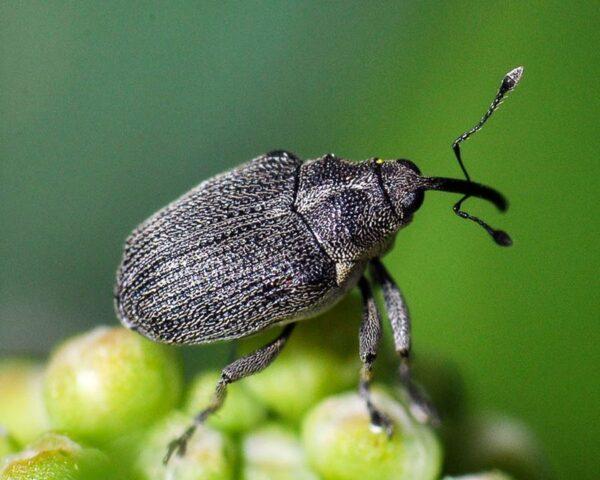
The best prevention of weevils is annual autumn cleaning of the beds and careful digging
Weevil control is carried out using standard methods. If the plantings are severely damaged, the bulbs affected by the pest are simply destroyed. The remaining specimens are treated with Aktara and Aktellik 3-4 times per season in accordance with the instructions. You should not eat green onions.
Onion moth
The adult insect is a small brown butterfly, and the larvae look like yellow-green caterpillars. The pest feeds on both feathers and underground onion heads, and in June lays eggs on the outer part of the leaves and on the surface of the turnip.
You can notice moths by carefully examining the plantings. The appearance of a pest is indicated by yellowing of the tips of the feathers and the appearance of holes in the greenery. In the absence of fight, the moth is capable of completely eating away the above-ground parts of the onion from the inside.
You can destroy larvae and adult parasites with ammonia solution or Iskra and Metaphos. Treatments are carried out up to four times per season, since the moth produces 2-3 generations from spring to late summer.
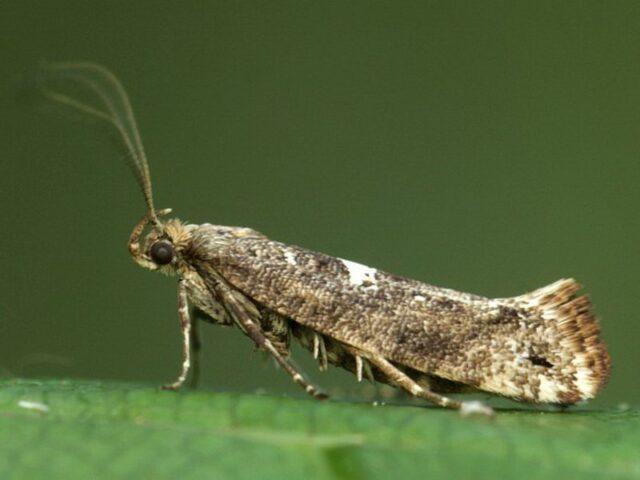
Adult onion moths are well repelled by dusting the beds with wood ash and tobacco.
Onion rattle
The rattle bug, or fire beetle, appears in the garden in mid-summer. Recognizing the pest of onion seeds and its feathers is quite simple - an adult insect has a bright red shell and is clearly visible against the background of greenery. Holes in yellowed leaves also indicate the presence of the parasite.
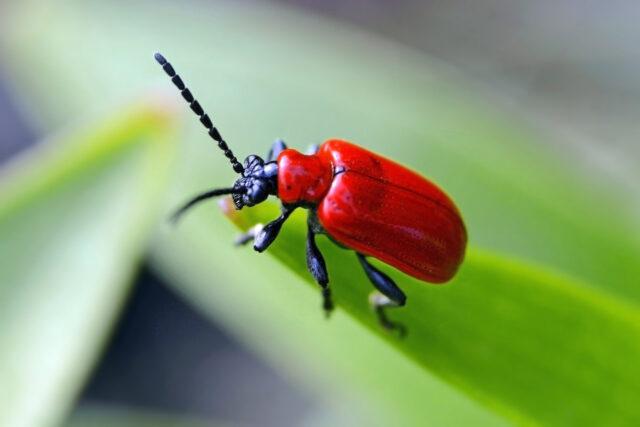
The firefighter beetle is called the rattling beetle because of the characteristic high-pitched sound it makes when in danger.
A good measure to control the pest on onions is hand picking, since the insect is clearly visible in the beds. Insecticidal agents - Decis, Mospilan, Karate - help get rid of the larvae.
Onion cutworm
The cutworm butterfly is a small moth with gray-brown wings on which whitish stripes are visible. Onions are threatened by insect larvae - green or pinkish caterpillars that eat feathers and gnawing the pulp of underground turnips. The appearance of the pest is indicated by the drying out of the greens, the heads of the vegetable become unsuitable for consumption.
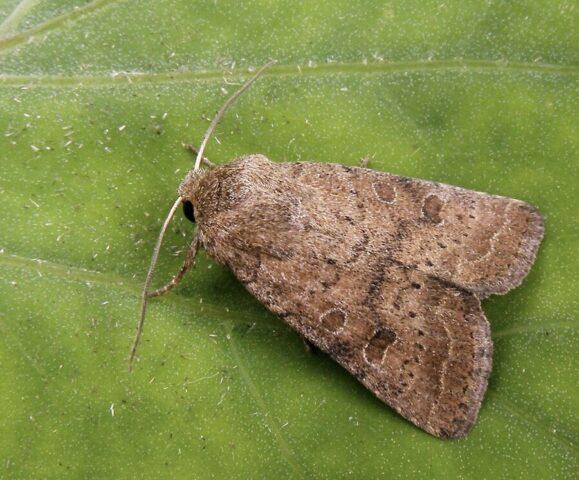
The adult moth flies mainly at night, so it is difficult to notice the pest in time in the garden
To eliminate the cutworm, the drugs Aktara, Tsitkor and Fufanon are used. Thorough loosening of the soil helps prevent infection of the beds. In this case, the insect eggs end up on the surface and cannot develop normally, and the hatched larvae quickly become food for birds.
Aphid
Green or gray aphids often attack onions grown for feathers and appear on the plant in May or early June. In the absence of a fight, it attacks plantings in large colonies and tightly adheres to the above-ground parts of the crop. It is easy to see the parasite upon careful examination; its presence is also indicated by the deformation of the leaves; they curl and bend.
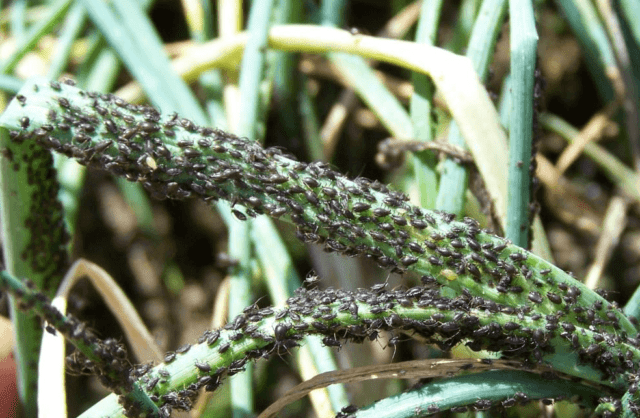
Aphids not only directly harm onions, but also transmit dangerous viral diseases.
The fight against the parasite is carried out by dusting with wood ash; a solution of laundry soap has a good effect. To repel the pest, you can plant marigolds, garlic and white mustard in the garden. The insect does not like these crops and rarely appears in close proximity to them.
Measures to prevent onions from diseases and pests
Protecting plantings preventively is much easier than fighting pests on onions, especially considering that treatment often does not produce results. When growing a crop you must:
- follow the rules of crop rotation and plant onions in the beds after carrots, legumes and grains, potatoes and cabbage;
- with the onset of autumn, dig up the soil and completely burn the remains of feathers, scales and other plant debris;
- carefully loosen the soil in the spring before planting onions;
- disinfect seeds and sets in a solution of potassium permanganate or salt infusion;
- Plant onions in late April or early May before pests become active in the garden.
Throughout the cultivation of the crop, the beds also need to be regularly weeded and loosened.Such procedures not only prevent the reproduction of insects, but also help improve the quality of the soil and prevent acidification and waterlogging.
Conclusion
Onion pests can greatly reduce the volume of the harvest or lead to its complete destruction. Home remedies and insecticides are used to control insects, but the main focus should be on preventive measures.
